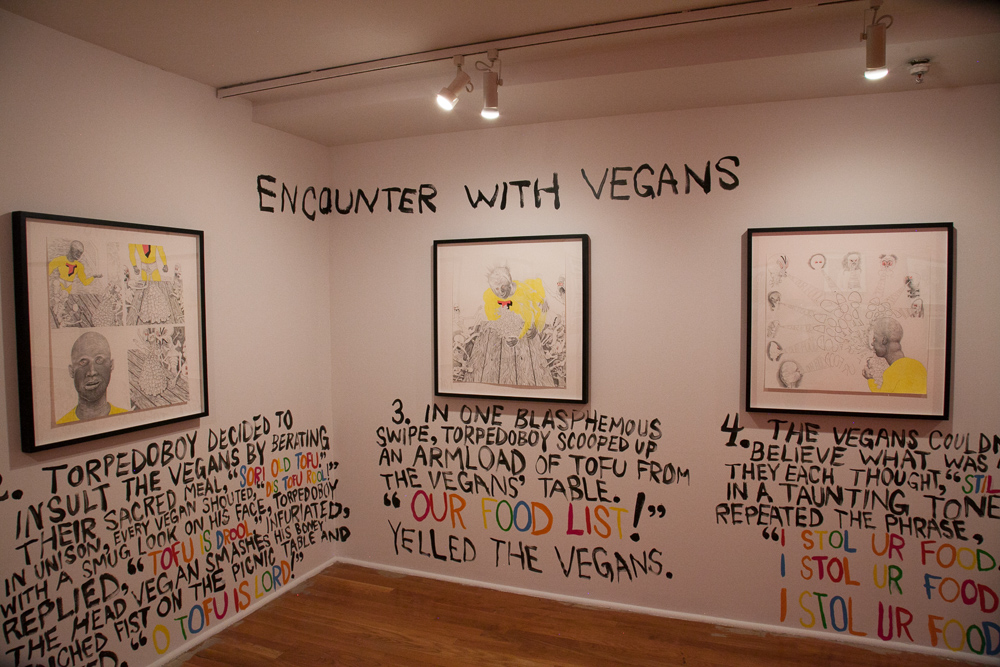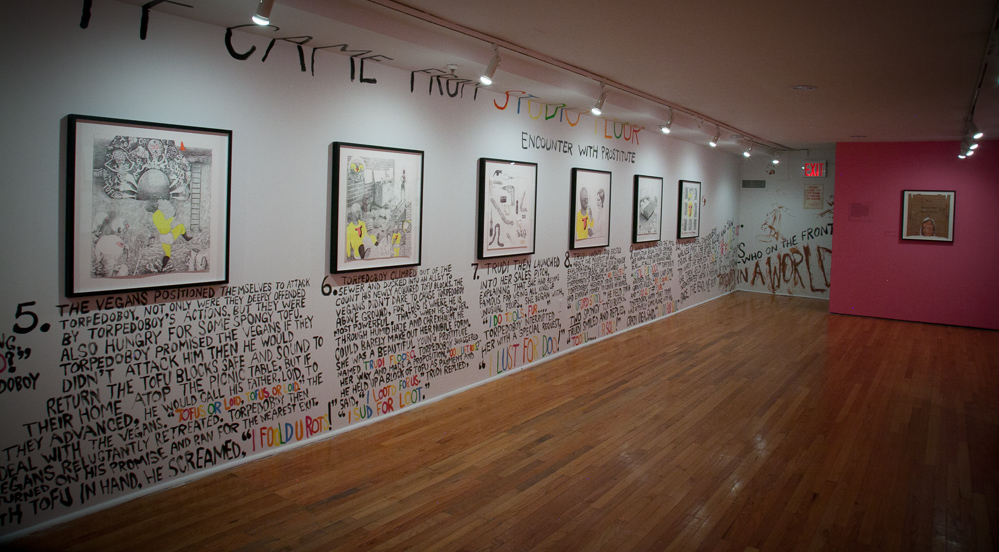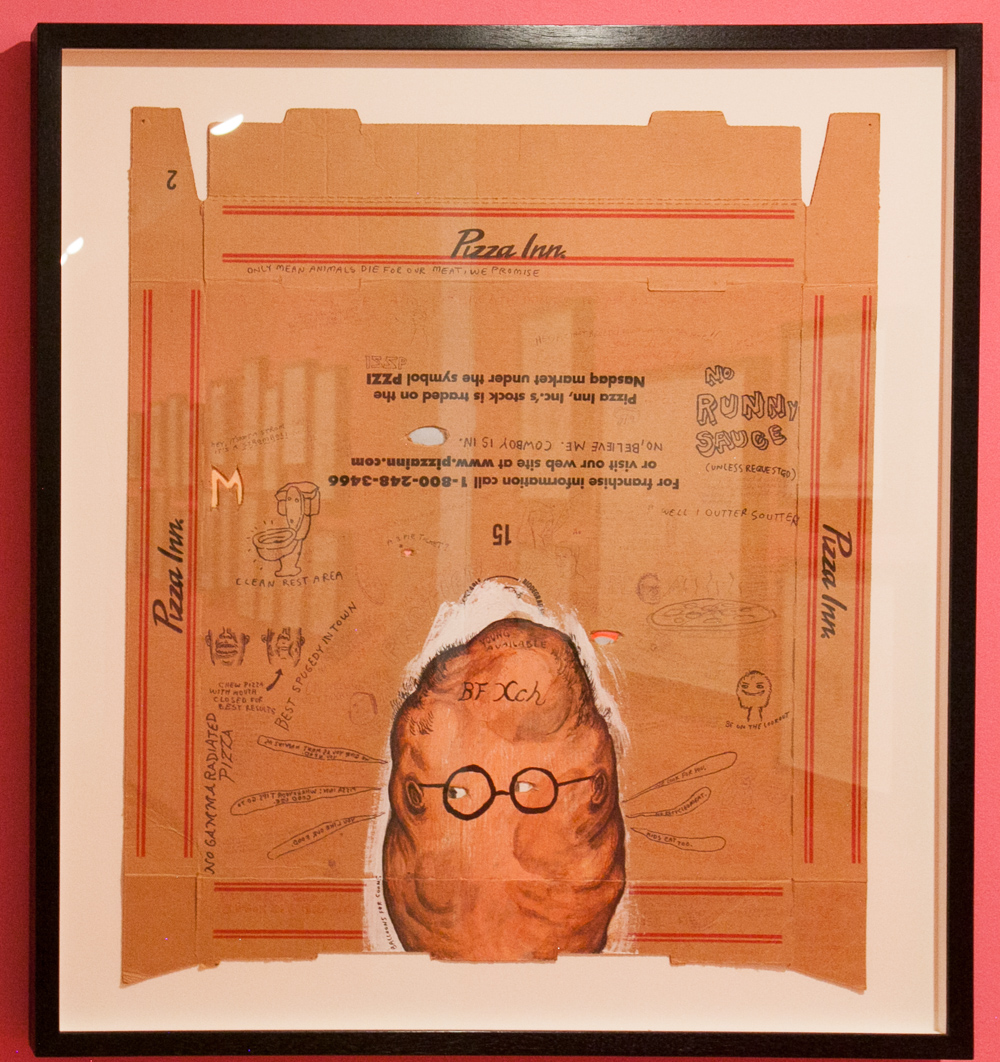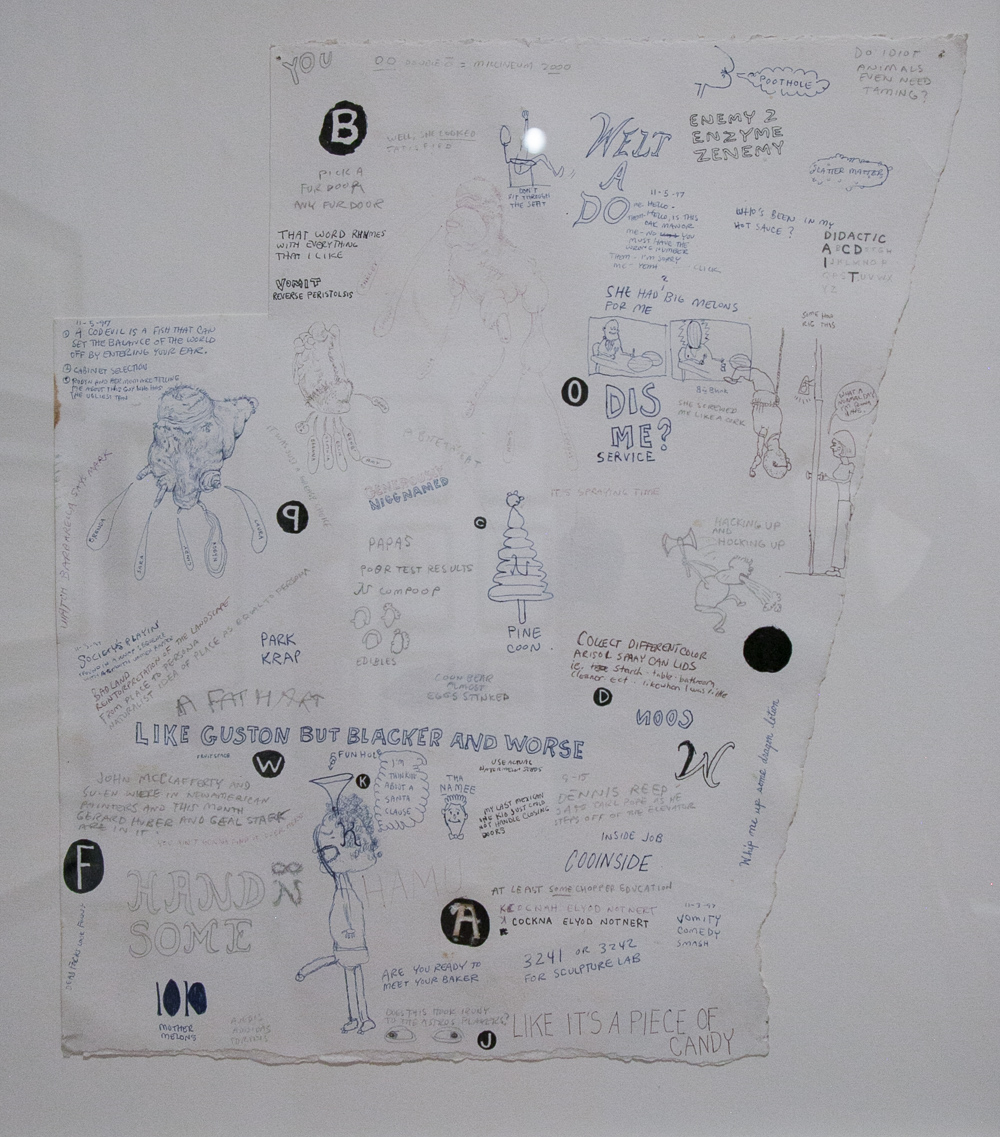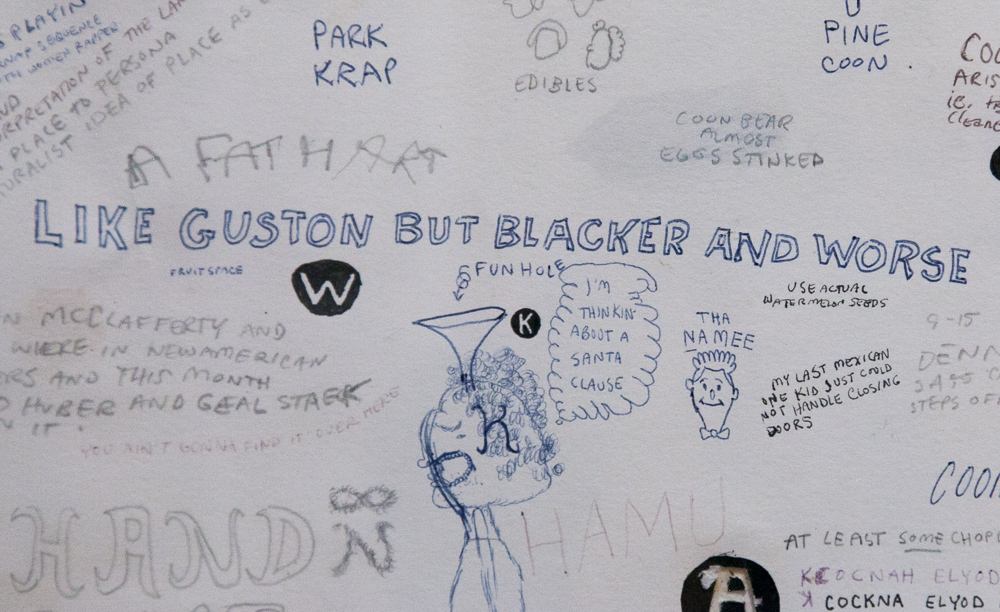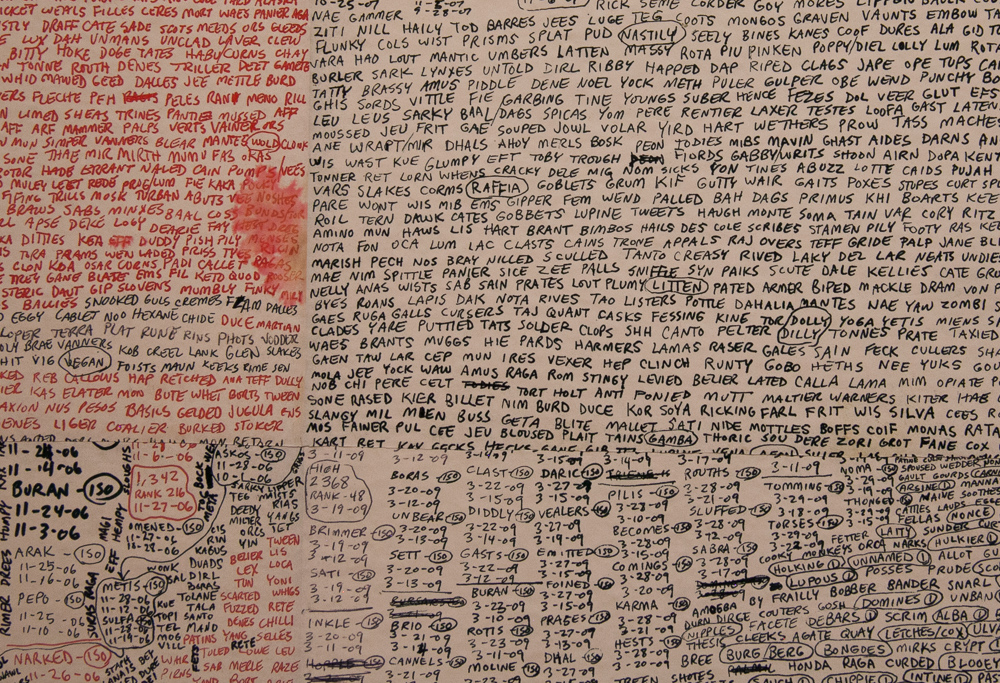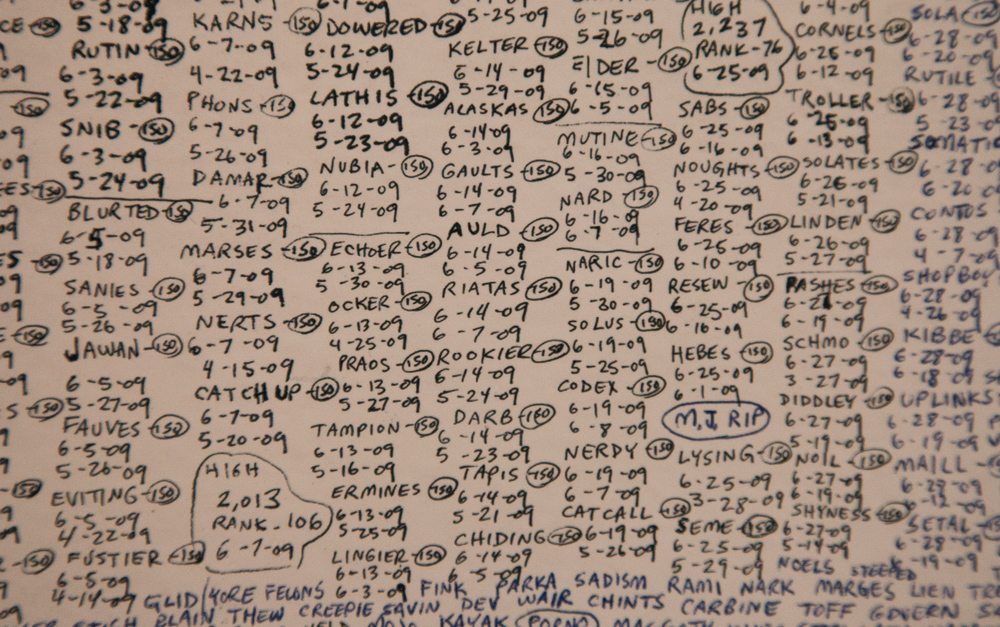Trenton Doyle Hancock: Skin and Bones, 20 Years of Drawing
The Studio Museum in Harlem
144 West 125th Street, New York
This exhibition has so many parts, it’s hard to know where to begin. It’s fascinating for several reasons: The in-depth, ongoing narrative of characters springing forth from the artist’s imagination and the fantastic rendering thereof, the variety of media employed in his process, the obsessive level of detail in the drawings, and the obvious dedication to exploring many different approaches to an idea. The most impressive aspect, besides seeing how Hancock’s work has evolved over the years, is the way the exhibition completely takes over the large and varied space, turning individual pieces into themes, then into a comprehensive installation complete with painting, drawing, and narrative applied directly to the walls themselves.
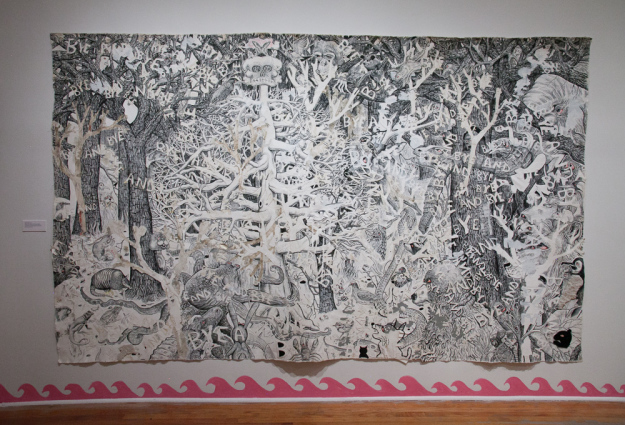 Bye and Bye, 2002, acrylic and mixed media on canvas, 84 x 132 inches
Bye and Bye, 2002, acrylic and mixed media on canvas, 84 x 132 inches
Collection of the Museum of Fine Arts, Houston, Texas
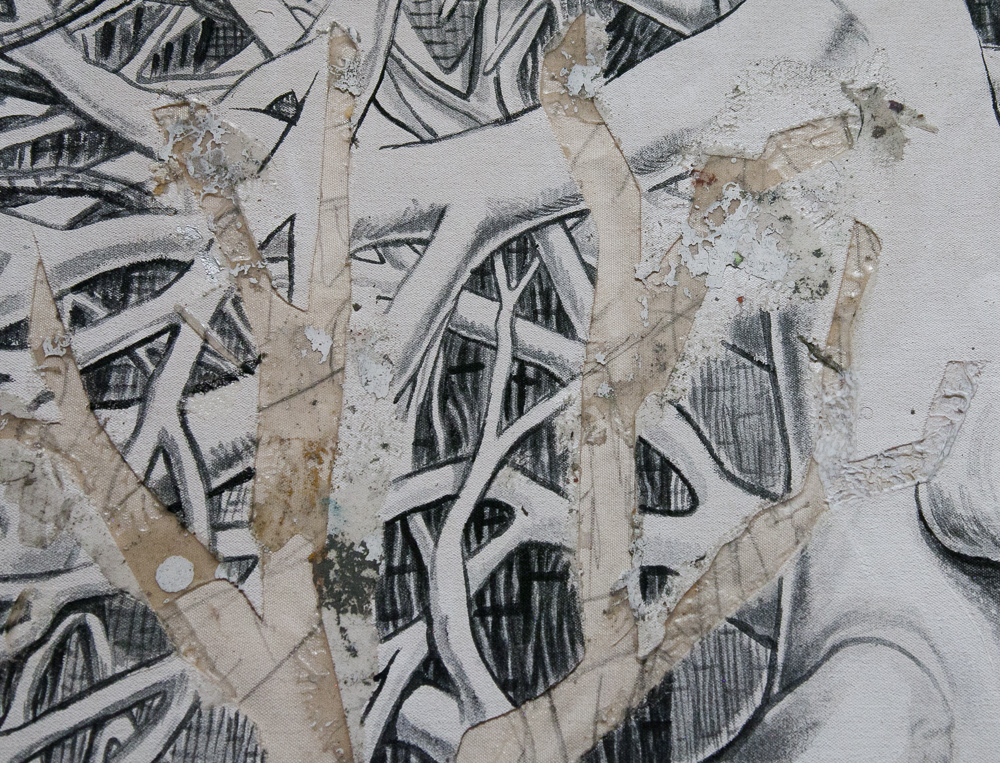 Bye and Bye, detail
Bye and Bye, detail
The exhibition features more than two hundred works of art as well as a collection of the artist’s notebooks, sketchbooks, and studies, many showing the preparation for several public commissions. Comprehensive in scope, this survey includes works from 1984 to 2014, chronicling the foundation of the artist’s prolific career. The exhibition provides a glimpse into the evolution of Hancock’s idiosyncratic vision beginning in his childhood. Ephemera such as early childhood drawings and the artist’s comic strip that ran in a college newspaper are featured to allow viewers to see the genesis of the artist’s mythology as well as the evolution of his practice. (Contemporary Arts Museum Houston)
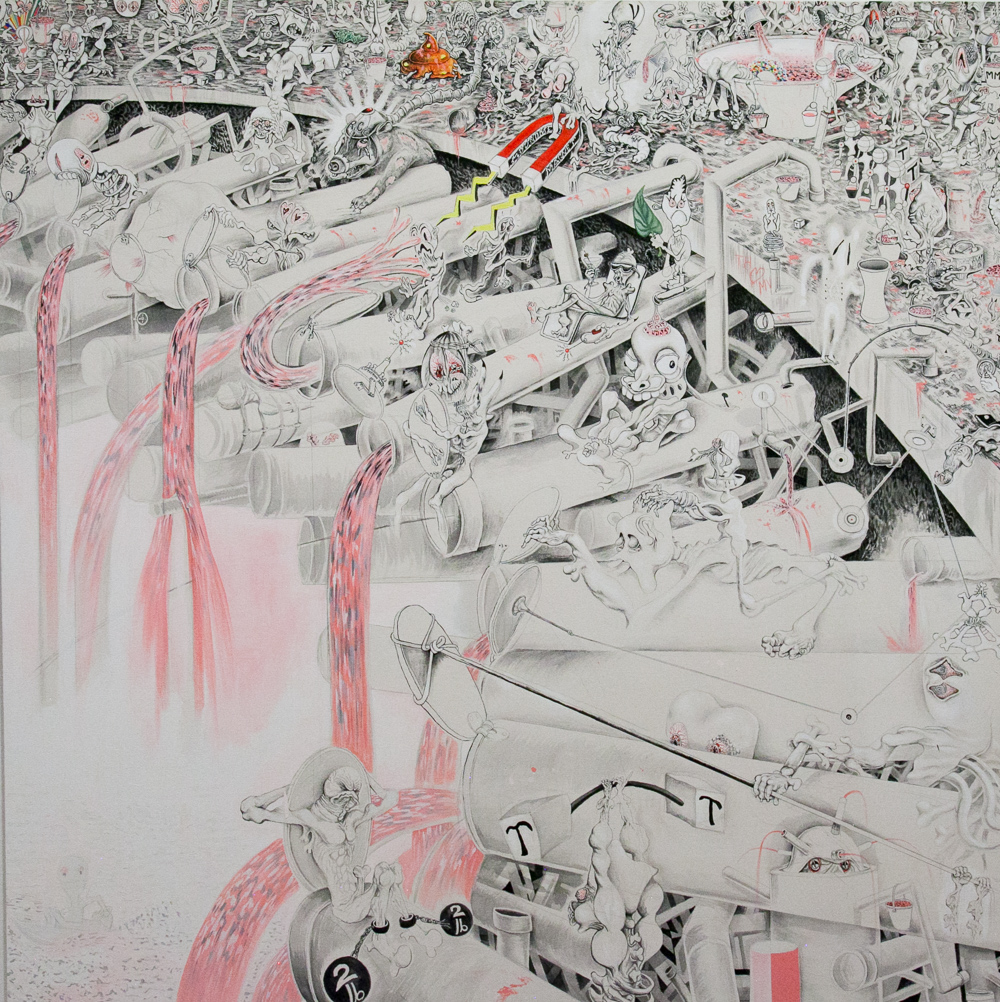 Vegans Send Newly Acquired Moundmeat to the Tofu Converter, 2004
Vegans Send Newly Acquired Moundmeat to the Tofu Converter, 2004
The section Moundish chronicles an epic narrative encompassing ten years of artistic production. Hancock’s mythology of the Mounds contains a full and varied cast of characters who move between good and evil. The story includes the Mounds – half-plant, half-animal creatures — who are preyed upon by their mortal enemies, the puritanical, conformist Vegans. Additional characters include Torpedoboy, the artist’s alter ego and a protector of the Mounds whose morality is highly suspect; Homerbuctas, father of the Mounds, Mound #1, The Legend, the very first Mound to exist; Painter, a spirit energy who brings color to this world; and Loid, a judgmental force who sees morality as either black or white.
(Wall label accompanying the work in the series)
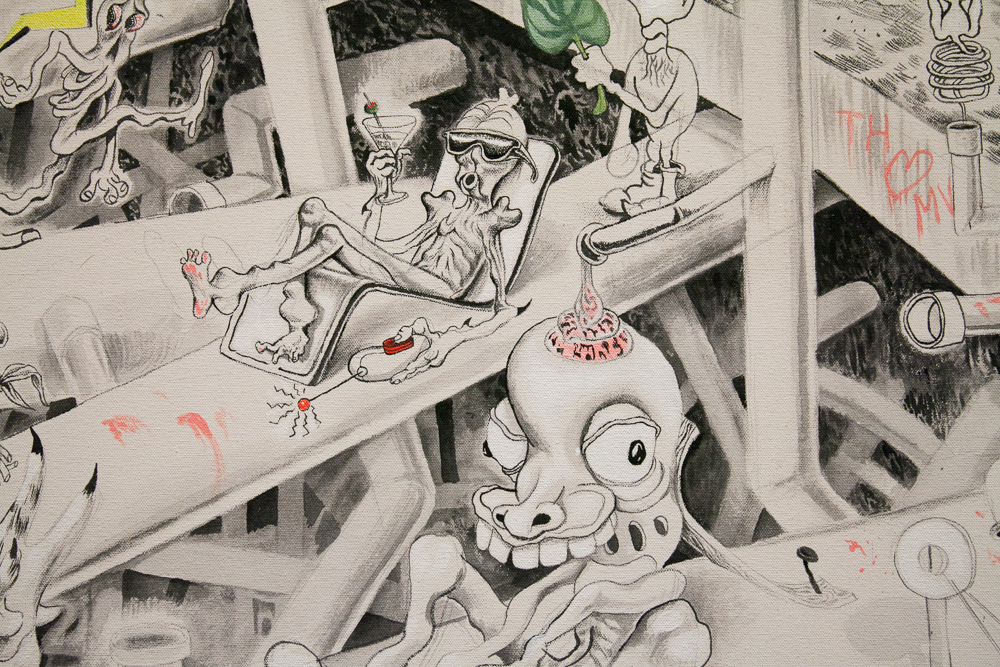 Vegans Send Newly Acquired Moundmeat to the Tofu Converter (detail)
Vegans Send Newly Acquired Moundmeat to the Tofu Converter (detail)
The From the Mirror section contains a variety of self-portraits from a period of more than twenty years. In recent years the variations “have become more wide-ranging; Hancock himself is now a character in his own mythology.”
The grouping I found most interesting was the The Liminal Room, which contains “stand-alone works that showcase Hancock’s experimentation with drawing as a method of visual brainstorming with both imagery and language. The works in this section range from doodles with only a few lines to convey the subjects, to more complex works that are highly detailed and full of visual information.”
Next to these was a group of drawings mounted on a wall that was covered with what seemed to be a wallpaper of pages and pages filled with endless close, tiny handwriting in a kind of code. I didn’t see any wall label explaining these and I never did find out what the code represented.

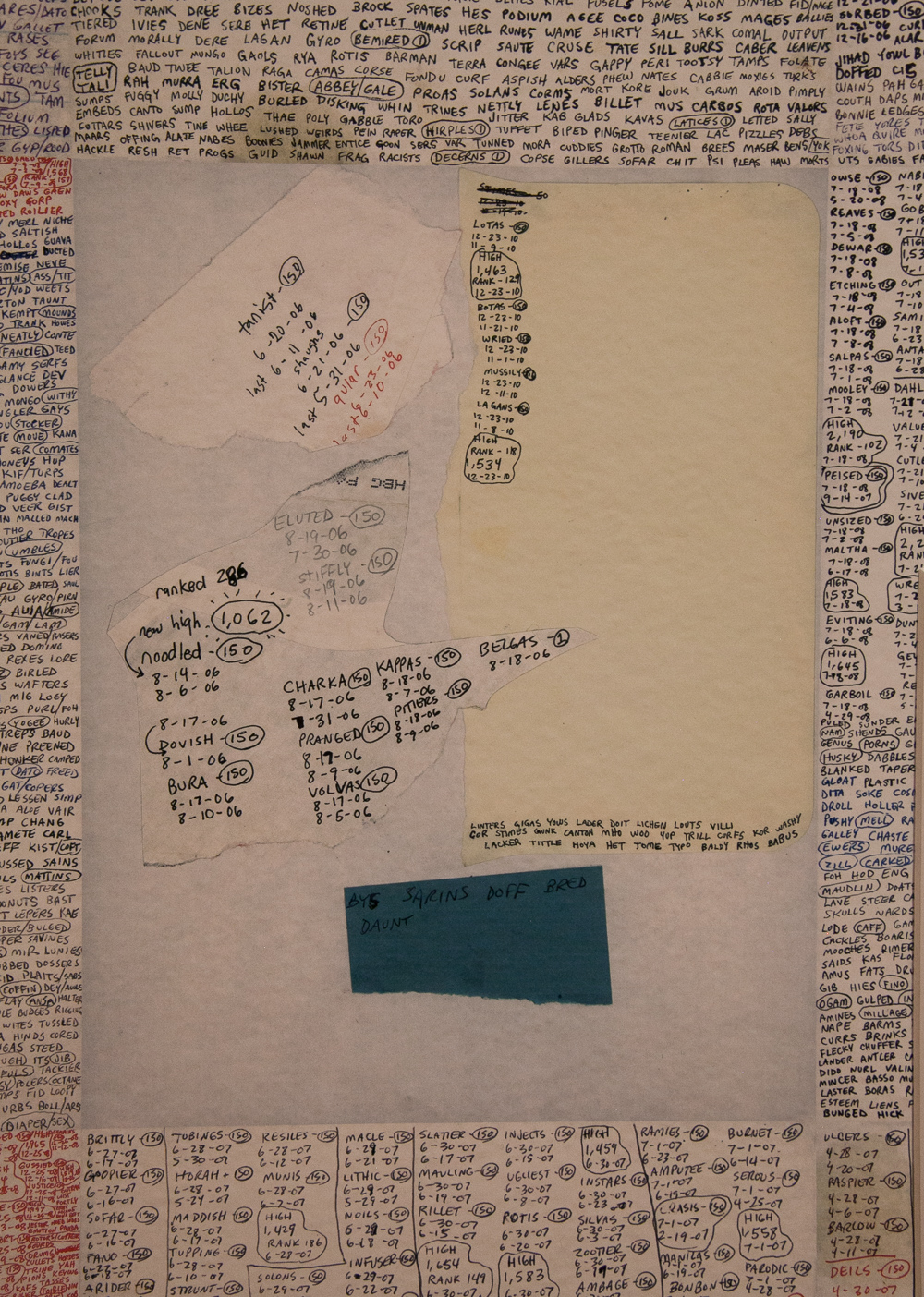
Hancock has received a lot of attention for this exhibition, even a review in Forbes, of all things. It’s interesting for the many direct quotes from the artist, including this one:
“What’s written about my characters and the names that I’ve assigned to these creatures is just one layer of a seven-layer cake. I don’t want the work to fall too far to the left or too far to the right; I want it to exist on a fine line. I want the work to be open where people can find their ways into the work and then find their ways out.”
There were several other interesting things on exhibit at the Studio Museum; more about them tomorrow.


